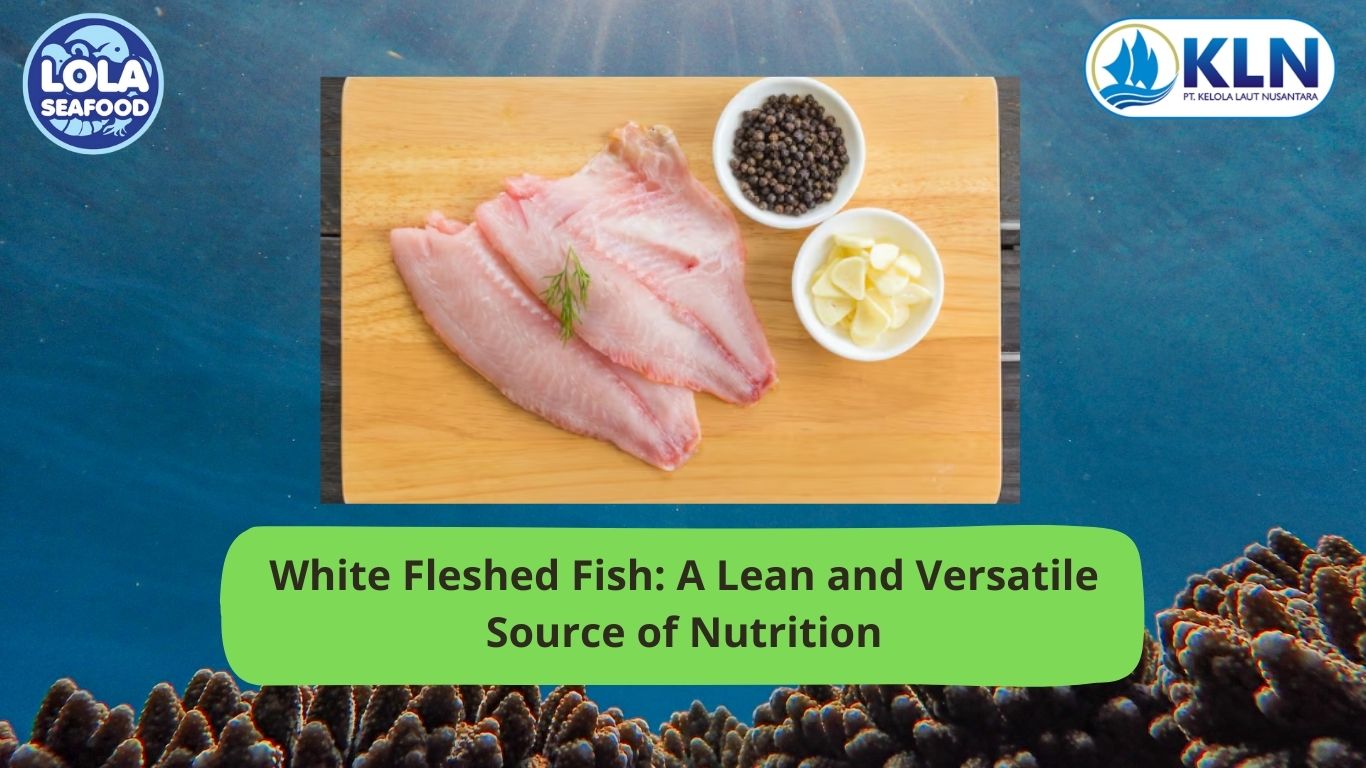White Fleshed Fish: A Lean and Versatile Source of Nutrition
By. Puji Widyastuti - 25 Sep 2025
Kelolalaut.com White-fleshed fish are among the most widely consumed seafood varieties in the world. Species such as cod, haddock, tilapia, snapper, and grouper are popular for their mild flavor, tender texture, and culinary versatility. Unlike red-fleshed fish, which have a distinctive pink or reddish hue due to higher levels of myoglobin, white-fleshed fish are characterized by their pale, almost translucent flesh. This difference in coloration is not only aesthetic but also reflects differences in muscle composition, activity level, and nutritional profile.
Nutritional Benefits of White-Fleshed Fish
One of the key advantages of white-fleshed fish is that they are naturally low in fat while still being rich in high-quality protein. This makes them an excellent choice for individuals seeking a lean source of animal protein. The protein found in white fish is highly digestible and contains all essential amino acids, supporting muscle growth, immune function, and overall health.
While white-fleshed fish generally contain lower amounts of omega-3 fatty acids compared to oily red-fleshed fish, they still provide a meaningful contribution to daily omega-3 intake. These fatty acids are essential for heart health, brain development, and reducing inflammation in the body. White fish are also a good source of vitamins and minerals, including vitamin B6, vitamin B12, niacin, phosphorus, and selenium. These nutrients play roles in energy metabolism, nervous system function, and antioxidant defense. Because of their low calorie and low fat content, white-fleshed fish are frequently recommended for weight management diets and heart-healthy eating plans. Their lightness makes them an ideal protein option for those looking to reduce cholesterol and saturated fat intake without sacrificing flavor or nutrition.
Biological Characteristics and Habitat
The white coloration of these fish is related to their muscle composition. White muscles are designed for quick, short bursts of energy rather than sustained swimming. As a result, many white-fleshed fish are found in environments where they can rest on the seafloor or swim at a slower pace, such as in coastal waters, reefs, or lakes. Cod and haddock, for example, are demersal fish, meaning they live near the ocean floor. Because they are not constantly swimming long distances like tuna or mackerel, white-fleshed fish have lower myoglobin levels in their muscle fibers. This results in a milder flavor and softer texture, which many consumers find approachable, especially those new to eating seafood.
Culinary Applications and Global Appeal
White-fleshed fish are incredibly versatile in cooking and can be adapted to suit a wide range of cuisines. Their mild flavor acts as a blank canvas, allowing them to absorb the seasonings, marinades, and sauces they are prepared with. They can be baked, grilled, poached, steamed, or fried, depending on culinary traditions and personal preferences. In European cuisine, cod is a classic choice for dishes such as fish and chips, where its flaky texture and delicate taste pair perfectly with a crispy batter. Tilapia and pangasius are widely used in Asian cuisine, often steamed or stir-fried with ginger, garlic, and soy sauce. White-fleshed fish are also a key ingredient in soups and stews, from Mediterranean bouillabaisse to Brazilian moqueca.
Because of their relatively neutral taste, white-fleshed fish are also excellent for introducing seafood to children or individuals who may be hesitant about the stronger flavors of oily fish.
Sustainability Considerations
As with all seafood, the popularity of white-fleshed fish has led to concerns about overfishing and habitat impact. Certain species, like Atlantic cod, have experienced significant population declines in the past due to excessive harvesting. Today, fisheries management organizations monitor stocks and implement catch limits to support sustainable harvesting. Consumers can look for eco-certifications, such as those from the Marine Stewardship Council (MSC), to ensure they are buying responsibly sourced fish.
Aquaculture has also become a major contributor to the supply of white-fleshed fish, particularly for species like tilapia and pangasius. When managed responsibly, fish farming can help meet global demand while protecting wild populations. However, it is essential that aquaculture operations follow strict environmental and food safety standards to avoid pollution, disease outbreaks, and ecological damage.
White-fleshed fish are a cornerstone of global diets, prized for their light flavor, high-quality protein, and versatility in cooking. They offer a lean, nutritious option suitable for a variety of dietary needs, from heart-healthy meals to weight management plans. At the same time, their unique muscle composition and habitat make them fascinating from a biological perspective. As demand for seafood continues to rise, sustainable management and responsible aquaculture are crucial to preserving these species for future generations. By making informed choices, consumers can enjoy the many benefits of white-fleshed fish while supporting the health of ocean ecosystems.
If youre interested in our Black Pomfret Portion Cut and Black Pomfret Whole Round please do not hesitate to contact us through email and/or Whatsapp




.jpg)

.jpg)

.jpg)